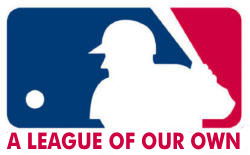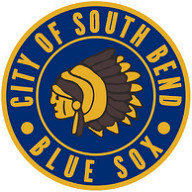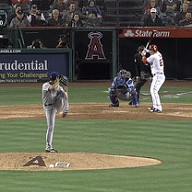League Rules
Revised April 3, 2016 (added executive summary; updated "Salary Cap," "Money Supply," and "Budget" paragraphs to reflect results of 2015 expansion vote)
Executive Summary
- Players are under contract for up to three years at the price originally paid for them in the draft, or $5—whichever is greater.
- Contracts may be extended beyond the third year, but the price increases to market value (determined by average Yahoo cost) plus a penalty for the extension.
- Contracts persist throughout the season, even if a player is dropped.
- Although there is no limit on the number of players you may keep, the total cost of your keepers must not exceed the salary cap. The cap only applies to keeper selection at the beginning of the season.
I. Governance
Any manager may propose a change to league rules or settings. The measure must receive at least two thirds of votes cast in order to pass. Managers may also propose a new rule or setting, which typically occurs when Yahoo introduces a new setting option that did not previously exist, or when a change to existing rules/settings necessitates a new decision (for example, the passing of a proposal to organize the league into divisions makes a vote necessary on how the new divisions should be configured). Since there is no "incumbent" rule/setting in these situations, the option receiving a plurality of votes cast wins. Managers are allowed to abstain from voting.
Any manager may also call a referendum to recall the current commissioner. Managers are not allowed to abstain in this situation, and the present commissioner is not allowed to vote (thus preventing a tie). A simple majority is necessary for the recall to pass. Following this, or when the commissioner has voluntarily stepped down, a new election is held. The candidate receiving a plurality of votes wins. When there are more than two candidates, the initial round is followed by a runoff between the two candidates who received the most votes.
New managers have the same rights as returning managers.
Situations not covered. When matters arise that are not covered by these rules, the commissioner determines how best to handle the situation, treating all managers equitably.
II. Contracts
Players are normally under contract for a maximum of three years, although contracts may be extended indefinitely, one additional year at a time, at the price of an increase in salary.
Why do we have this rule?
Contracts that span multiple seasons add strategy and realism to keeper decisions. By allowing players to retain the same value for a few years, we introduce the option to build for the future or make a push to win right now. For instance, at the trade deadline we typically have buyers, who are interested in impending free agents or late-career veterans, and sellers, who trade those types of players for prospects or more favorable contracts. The contract becomes part of the player's value (a good player may have a bad contract, for example), and enables managers to invest in a player's development.
Existing contracts are not affected by changes in ownership via trades, waiver claims, or free agent acquisitions. In other words, a player retains his contract for the duration of the season, and a manager assumes the existing contract of any player acquired. Contracts are only reset when a player is not selected as a keeper before the following year's draft.
Why do we have this rule?
Quality players are occasionally dropped for reasons such as injury, impatience, or the lack of a roster spot. It would unfairly distort the player's value if his contract were reset and the manager who added/claimed him could keep him at an entry-level price next year.
Normal contracts. Under a "normal" contract (i.e., one that has not been extended), a player's salary is determined by the price originally paid to draft him in the first year of his contract. This value is not allowed to be less than $5. The salary of a player who went undrafted and was first added as a free agent is also $5. In the second and third years of a player's contract, his salary remains at its original level.
Why do we have this rule?
We have a minimum salary requirement so that all keepers have an appreciable impact on a team's budget, and so that the Mike Trouts of the world still cost something early in their careers.
Extended contracts. After three seasons, a contract may be extended for one additional year at a time if desired. Salary in this case is determined by the player's average draft value in Yahoo public leagues before the current season's draft (or $5—whichever is greater), plus a penalty for the extension. The penalty equals 17.5% of base value multiplied by the number of times the contract has been extended. For example, in year five, the penalty is 17.5% * 2 = 35%. This salary is not allowed to be less than it was during the previous season.
Why do we have this rule?
Extending a contract is analogous to making a "qualifying offer" in MLB. Uncertainty as to whether an opposing manager will keep a particular player past year three makes keeper decisions and trades more interesting. We reset player salary and charge a fee for each extension to make it costly—and at some point, impractical—to keep a player for more than 3–5 years or so (especially if the player has a high base salary).
Salary cap. The salary cap on keeper selections is set equal to 145/260 times the base budget (see Section IV below). A team's total salary must not exceed this amount when keepers are chosen. The cap applies only to keeper selection before the draft; it does not restrict managers' ability to add, drop, or trade players during the season. However, a team's draft budget is reduced by the total cost of its keepers.
Playoff Acquisitions. Players added during the playoffs are ineligible to be kept the following season, even if dropped and re-added.
Why do we have this rule?
Without this rule, managers can stash prospects (a past Bryce Harper addition comes to mind) on the last day of the playoffs or once they're eliminated from contention. While teams that miss the playoffs can still exploit the loophole on the last day of the regular season, the best teams in the league can stash only by carrying a player throughout the playoffs.
III. Franchise Ownership
A manager who is new to the league may choose to adopt any team from the previous season whose owner is not returning. By doing so, he acquires all of the previous owner's contracts, as well as the owner's draft budget (which depends on the prior season's standings). New managers are free to waive this option. When multiple managers are adopting teams, they choose in the order in which they joined the league.
IV. Draft
Money supply. The money supply, or sum of all teams' budgets, equals $2,600 + $1*(N-250), where N is the number of players to be drafted (i.e., the number of teams times the size of rosters).
Budget. Draft budgets are determined by the prior year's regular season standings. The lower a team finished in the standings, the larger its budget. Team budgets are calculated from a "base budget" which equals the money supply divided by the number of teams in the league. Team budgets are set symmetrically about the base budget with a $2 margin between each. To illustrate, in a ten-team league with 25-man rosters the base budget will be $260, and the distribution will be as follows:
| Finish | Budget ($) |
| First | 251 |
| Second | 253 |
| Third | 255 |
| Fourth | 257 |
| Fifth | 259 |
| Sixth | 261 |
| Seventh | 263 |
| Eighth | 265 |
| Ninth | 267 |
| Tenth | 269 |
New managers who have not adopted an existing franchise are treated as if they had finished last in the standings. If multiple managers are in this situation, the corresponding dollars are divided evenly among them.
Expansion. When the number of teams in the league increases, an expansion draft is held before returning managers submit their keeper selections to the commissioner. All new managers (except those who adopted an existing franchise) participate in the expansion draft.
Returning managers are allowed to protect a certain number of the players on their rosters, and new managers then pick from the remaining players. Both the number of players protected and the number drafted are agreed upon by the entire league prior to the expansion draft. The players picked by new teams from returning teams' rosters must be selected as evenly as possible from the returning teams.
V. Transactions
Off-season trades. Trades are allowed during the off-season, provided that both managers intend to return for the coming season. The commissioner notifies the league by email and allows one week for protests, which must be made publicly in this case. The usual number of vetoes required to overturn a trade still applies.
Pre-draft trades. Trades are also permitted once the next year's league has been created, prior to the draft. Regular veto rules apply, including the normal time frame for protests.
Trading auction dollars. Managers may include their future auction dollars in trades. Although there is no limit on the amount of money a manager may acquire or trade away, other league members are likely to veto a trade if they suspect collusion.
Weekly moves limit. The limit on acquisitions per week is lifted or modified in the following circumstances:
- The limit is temporarily removed during the first week after the draft, so that managers can make adjustments to their rosters
- During fantasy "weeks" that last two calendar weeks, the limit is doubled
VI. Preseason Procedure
- League votes on changes to rules and settings
- If an expansion draft is being held, returning managers submit their lists of protected players to the commissioner
- Expansion draft (if necessary)
- Managers submit their keeper selections to the commissioner
- Regular draft












